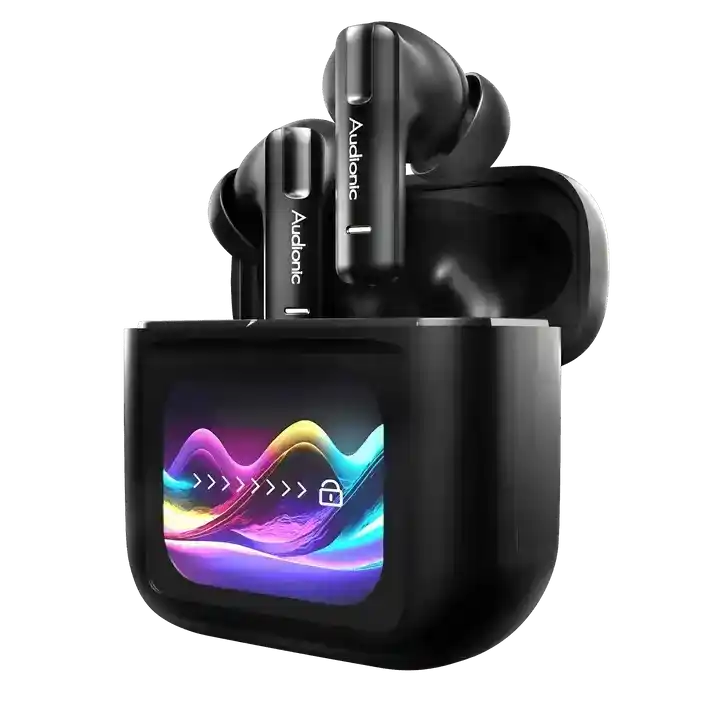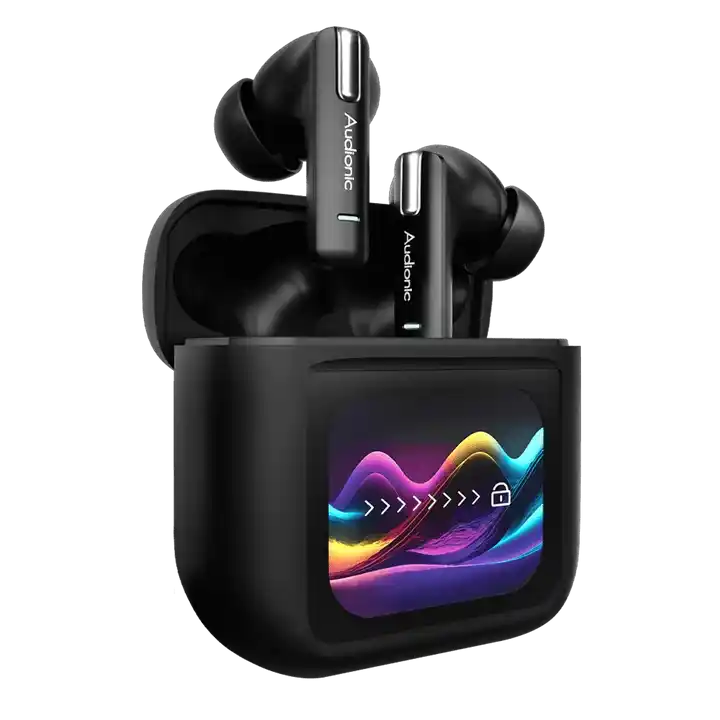
Breaking Down Sound Profiles: Bass, Treble, and What They Actually Mean for You
Introduction
When it comes to audio equipment—whether it’s wireless earbuds, headphones, portable speakers, or even high-end home theaters—the conversation often revolves around sound quality. But what exactly does "sound quality" mean, and how do the different components of sound contribute to the experience? Bass and treble are two of the most talked-about elements, but many people don’t truly understand what these terms mean or how they affect the music they listen to.
In simple terms, bass and treble represent the low-frequency and high-frequency sounds in music, respectively. The balance between these frequencies plays a pivotal role in determining how your music sounds. Some people prefer deep, punchy bass, while others lean toward crisp, clear treble. But the real question is: how do these sound profiles influence your listening experience, and what should you look for when choosing audio equipment?
In this article, we’ll break down what bass and treble mean, how they impact the sound of your music, and how you can adjust them to suit your personal taste.
1. Understanding Sound Frequencies: A Basic Overview
Before diving into bass and treble specifically, it’s important to understand sound frequencies in general. Sound can be broken down into a range of frequencies, from low to high, and each frequency range contributes a different characteristic to the sound.
- Low Frequencies (Bass): These frequencies range from about 20 Hz to 250 Hz. Bass sounds are deep and rich, often associated with the beat of the music, like the thump of a bass guitar, the rumble of a kick drum, or the low-end rumble of electronic dance music (EDM). These frequencies are often responsible for the physical sensations you feel when the sound hits your chest or vibrates through your body.
- Mid Frequencies (Mids): These frequencies fall between 250 Hz to 2,000 Hz and include the sounds of vocals, guitar riffs, and many instruments that fall in between. The mids are crucial for clarity in music and speech, as they capture the essence of melodies and instruments.
- High Frequencies (Treble): The treble frequencies range from 2,000 Hz to 20,000 Hz. These are the crisp, bright, and sharp sounds in music. You’ll find them in the hi-hats of drums, the high notes of vocals, or the sparkle of string instruments. Treble adds detail and clarity to the music and helps bring out the high-end details of a track.
Now that we understand the basic frequency range, let’s focus on the two extremes—bass and treble—and how they affect your listening experience.
2. Bass: The Foundation of Deep, Punchy Sound
What is Bass?
Bass refers to the lower end of the sound spectrum. It includes frequencies from 20 Hz to 250 Hz, and it’s often associated with the deep, resonant sounds that you can feel vibrating through your body. Think of the thumping bass in a club, the pulsing low-end in hip-hop, or the rumbling sub-bass in a movie soundtrack. Bass is what gives music its depth, weight, and physicality. Without enough bass, the music can sound thin or lacking in presence.
Why Bass Matters
When people refer to “good sound,” they often mean the balance of bass that provides a rich, full sound. Too little bass, and your music may sound tinny or underwhelming; too much, and it can drown out the vocals and other elements of the track.
Bass-heavy audio gear is often preferred by those who enjoy genres like hip-hop, EDM, or rock music, where the low-end frequencies are crucial for an immersive experience. If you love feeling the beat as much as you hear it, you’ll likely appreciate a sound profile that emphasizes punchy, powerful bass.
How Bass Affects Different Music Genres
- Hip-Hop/Rap: The bass in hip-hop is essential for emphasizing the rhythm and beat. A deeper, more pronounced bass adds to the overall energy of the track, giving it a dynamic feel.
- EDM: In electronic dance music, bass is the heartbeat of the track. The low-end frequencies create that "drop" sensation, the moment when the beat hits and the music explodes. Strong bass response is critical for making these tracks sound full and immersive.
- Rock: Rock music benefits from a balanced bass that supports the guitar and drums. Bass guitar in rock provides the foundational groove that gives the song its momentum and power.
If you enjoy music that’s built around a solid rhythm and groove, you’ll appreciate audio equipment that enhances bass frequencies, making the experience more engaging and immersive.
3. Treble: The Sparkle That Adds Clarity and Detail
What is Treble?
Treble refers to the high-end frequencies of sound, typically from 2,000 Hz to 20,000 Hz. These frequencies are responsible for the bright, crisp, and shimmering elements in music. Treble is what allows you to hear the high-pitched notes in instruments like saxophones, violins, and pianos, as well as the sharpness of percussion instruments like cymbals and hi-hats. It’s also responsible for making vocals sound clear and distinct.
Why Treble Matters
Treble is essential for adding clarity and definition to your music. While bass provides the foundation and depth, treble ensures that the finer details and higher notes are not lost. Too little treble can make the music sound muffled or dull, while too much can create an unpleasant shrillness that overwhelms the rest of the sound.
For those who prefer a sound profile with crisp highs and clear vocals, treble is a key consideration. It’s especially important for genres that emphasize melody, such as classical music, jazz, and pop.
How Treble Affects Different Music Genres
- Classical Music: Classical pieces often rely on treble for the clarity of string instruments, woodwinds, and high-pitched orchestral notes. A bright treble ensures that these intricate melodies come through clearly, without being overshadowed by the lower frequencies.
- Jazz: In jazz, treble brings out the nuances in saxophones, trumpets, and pianos. The high-end frequencies highlight the subtle details that give jazz its unique, improvisational feel.
- Pop: Pop music is typically built on catchy melodies and clear vocals. Treble ensures that the vocals and melodies are bright and stand out in the mix, creating an energetic and vibrant listening experience.
If you value clarity, sharpness, and the ability to hear every note with precision, then treble is the frequency range that will matter most to you.
4. The Balance Between Bass and Treble: Finding the Right Sound Profile
The relationship between bass and treble is essential for creating a well-rounded sound profile. Too much of one at the expense of the other can throw off the balance and affect the overall listening experience.
What Happens When the Balance Is Off?
- Too Much Bass: If the bass is too dominant, it can overwhelm the higher frequencies, making your music sound muddy or boomy. You may lose clarity in the vocals or lose the details in the high-end notes. This is especially problematic when listening to genres like classical music or jazz, where treble is necessary for precision.
- Too Much Treble: Excessive treble can create a harsh or piercing sound that’s uncomfortable to listen to for extended periods. It can also make lower frequencies sound weak or underrepresented. High treble levels can lead to ear fatigue, especially when listening at high volumes.
How to Find Your Ideal Sound
Most modern audio devices come with equalizers (EQs) that let you adjust the bass and treble to your liking. Whether you want to boost the low-end thump for your favorite EDM tracks or enhance the crispness of the vocals in a podcast, tweaking the EQ gives you full control over your listening experience.
If you’re using wireless earbuds or headphones with touch controls, many models allow you to adjust the bass and treble through the connected app or via gestures on the earbuds themselves. This makes it easy to fine-tune your sound profile depending on the type of content you’re consuming.
5. Conclusion: Bass, Treble, and Your Listening Experience
Bass and treble are two essential elements of sound, each contributing a unique character to the music you enjoy. Understanding what they are and how they affect the sound can help you make better decisions when choosing audio gear. Whether you prefer deep, punchy bass for an immersive feel, or clear, bright treble for precision and detail, the right balance can significantly enhance your audio experience.
Next time you’re listening to music, paying attention to the bass and treble might just change how you perceive the sound. After all, your ideal sound profile is entirely up to your preferences, and understanding how these frequencies shape your music can help you get the most out of your audio devices.
So, whether you're a bass lover, a treble enthusiast, or someone who craves perfect balance, the key is to find the sound profile that fits your needs and enhances the way you listen to your favorite tunes.

















